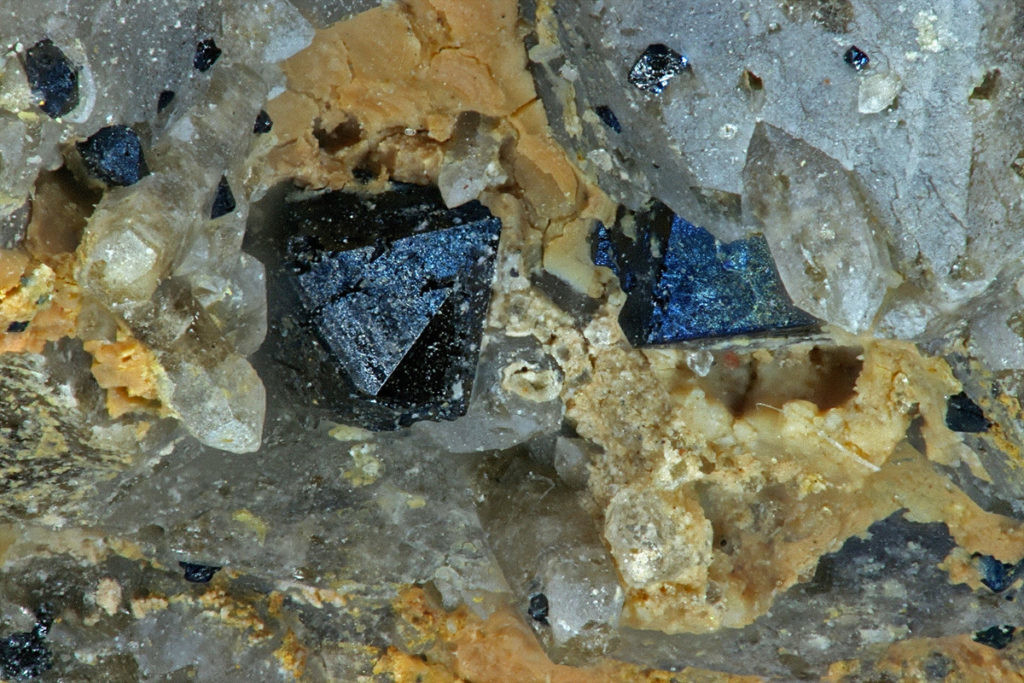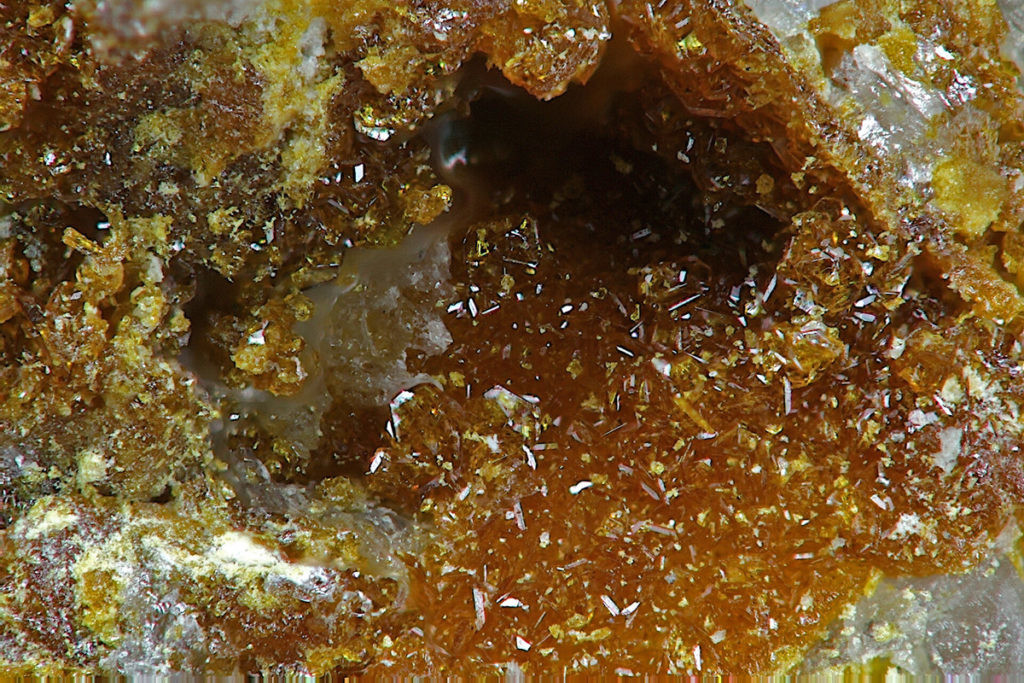
It was on the last day of the Munich Mineral Days of 1999. The Micromounter Working Group had its own booth for the second year in a row. A gentleman we did not know before appeared at the booth and introduced himself: “My name is Klaus Fleck. I deal in systematics minerals and would like to get out of this business. There is still a lot of merchandise in my house that I would like to part with. For this I see only the possibility of throwing away or giving away.” It was not difficult for us to convince him that giving away was the better solution. So we made an appointment to pick up the specimen from him.
A few weeks later, Klaus Fleck’s house was free of merchandise. But the lath cellar of our apartment in Heimstetten was no longer accessible and the idea of the Lithothek was born. In the Mineral Atlas we have described in more detail how it came about and how in the weeks after that the idea of the Lithothek became concrete. In the Mineral Atlas details about this process are described under the search term “Klaus Fleck”.
The year 2000 was filled with preparatory work. Mr. Fleck’s material had to be prepared (What goes into the Lithothek? What will be distributed in the working group? What is to be sold?), a database system for the collection documentation had to be found and much more. It was only in 2001 that we could start with the actual construction of the Lithothek.
He dealt mainly with systematics minerals, which often have names that we heard for the first time at that time and which seemed very exotic to us. Also the names of the localities were not familiar to us. They were often located in countries that none of us had ever traveled to. Getting the information we needed from the literature was exceedingly difficult. Also, the internet was not really developed in the early years of the 21st century, the mineral atlas was as much in its infancy as our lithotheque. To give just one example among many: How should we deal with a specimen that bore the name winstanleyite and was supposed to come from Arizona?
We made life easy for ourselves at first. The specimen was given a number and incorporated into the collection with exactly the information we had. We showed courage for the gap and paid the price for it that many data needed in itself were missing in our newly emerging collection, or at least were not as accurate as we would have liked.
In our documentation, each collection object was to be provided with a quality characteristic, whereby the evaluation options from “very good” to “poor” were available to us. Due to the lack of comparative possibilities and our own experience, it was difficult for us to reliably evaluate these levels, so almost all of them received the quality level “poor”.
Sometimes simple solutions are the best. This was probably also the case in this instance, which only became apparent again and again in later years (and still today). At some point (sometimes only years later) a piece was donated to us from a completely different source with the same name and a similar location. Only now we had possibilities for comparison, which we also used. Also the possibilities for research had improved considerably. And of course our own level of knowledge was much higher.
The result of our comparison work was basically always the same: In the vast majority of cases, we were able to determine that Klaus Fleck’s specimens were correctly identified. Often, however, the newly added specimen provided clues to the more exact locality. Almost always we were allowed to determine that we had underestimated the specimen of Klaus Fleck originally and from ignorance clearly, which we could correct now.
Only in rare cases did the comparison raise questions, which then led us to have one of the two or even both comparison pieces analyzed. So far, it has not happened that Klaus Fleck’s piece turned out to be wrong and therefore had to be taken out of the lithotheque.
Klaus Fleck was not a collector at any time. At least he never collected micromounts or small specimens. A kind of collection only came into being after he had parted with his stock and we partly integrated his material into our lithotheque. We often and gladly think back to him and thus the beginnings of our project.

IW = 3,5 mm, (A003 079)

IW = 2,3 mm, (A000 074)
Told by Dr. M. Seitz
